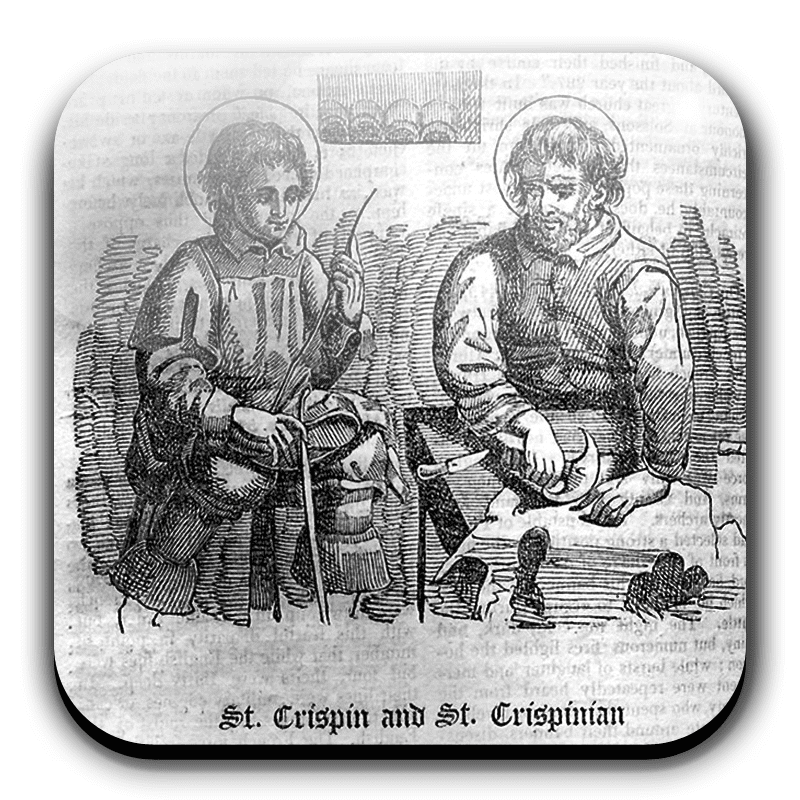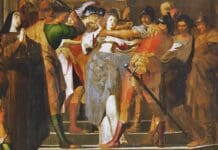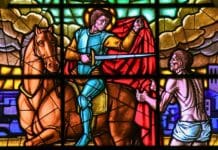Martyrs of the Early Church who were beheaded during the reign of Diocletian; the date of their execution is given as 25 October, 285 or 286. It is stated that they were brothers, but the fact has not been positively proved. The legend relates that they were Romans of distinguished descent who went as missionaries of the Christian Faith to Gaul and chose Soissons as their field of labour. In imitation of St. Paul they worked with their hands, making shoes, and earned enough by their trade to support themselves and also to aid the poor.
During the Diocletian persecution they were brought before Maximianus Herculius whom Diocletian had appointed co-emperor. At first Maximianus sought to turn them from their faith by alternate promises and threats. But they replied: “Thy threats do not terrify us, for Christ is our life, and death is our gain. Thy rank and possessions are nought to us, for we have long before this sacrificed the like for the sake of Christ and rejoice in what we have done. If thou should’st acknowledge and love Christ thou wouldst give not only all the treasures of this life, but even the glory of thy crown itself in order through the exercise of compassion to win eternal life.”
When Maximianus saw that his efforts were of no avail, he gave Crispin and Crispinian into the hands of the governor Rictiovarus (Rictius Varus), a most cruel persecutor of the Christians. Under the order of Rictiovarus they were stretched on the rack, thongs were cut from their flesh, and awls were driven under their finger-nails. A millstone was then fastened about the neck of each, and they were thrown into the Aisne, but they were able to swim to the opposite bank of the river. In the same manner they suffered no harm from a great fire in which Rictiovarus, in despair, committed suicide himself. Afterwards the two saints were beheaded at the command of Maximianus.
In the sixth century a stately basilica was erected at Soissons over the graves of these saints, and St. Eligius, a famous goldsmith, made a costly shrine for the head of St. Crispinian. Some of the relics of Crispin and Crispinian were carried to Rome and placed in the church of San Lorenzo in Panisperna. Other relics of the saints were given by Charlemagne to the cathedral, dedicated to Crispin and Crispinian, which he founded at Osnabrück. Crispin and Crispinian are the patron saints of shoemakers, saddlers, and tanners.

















